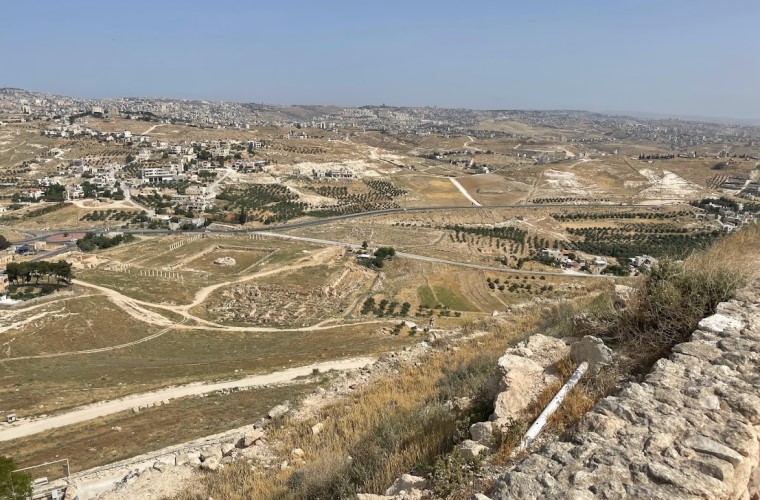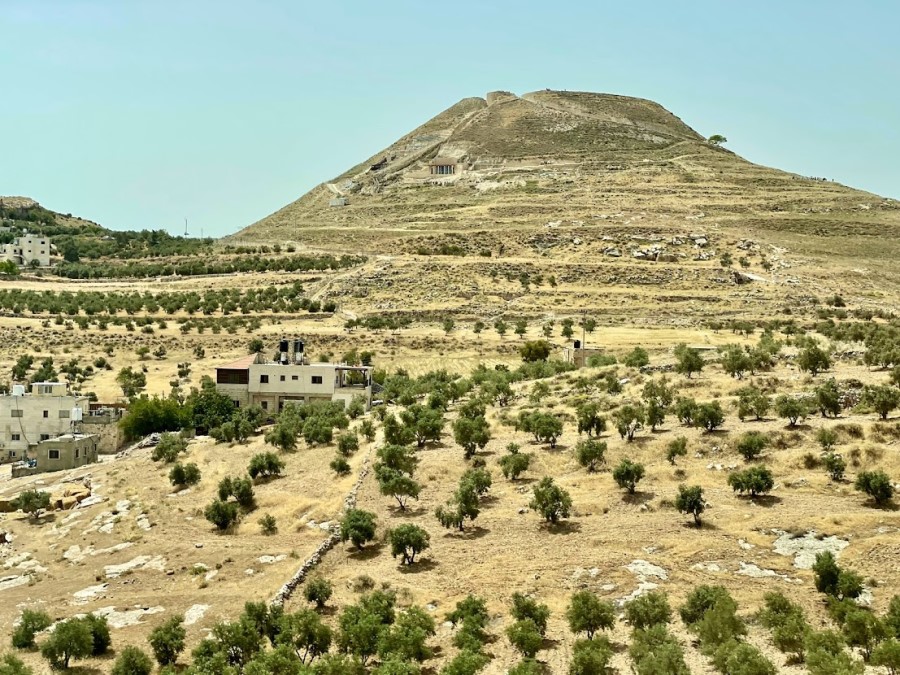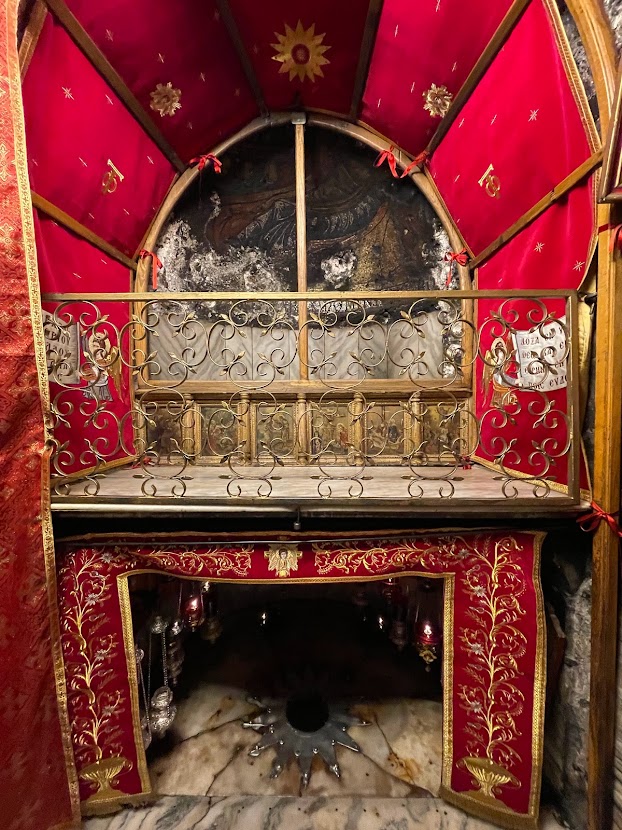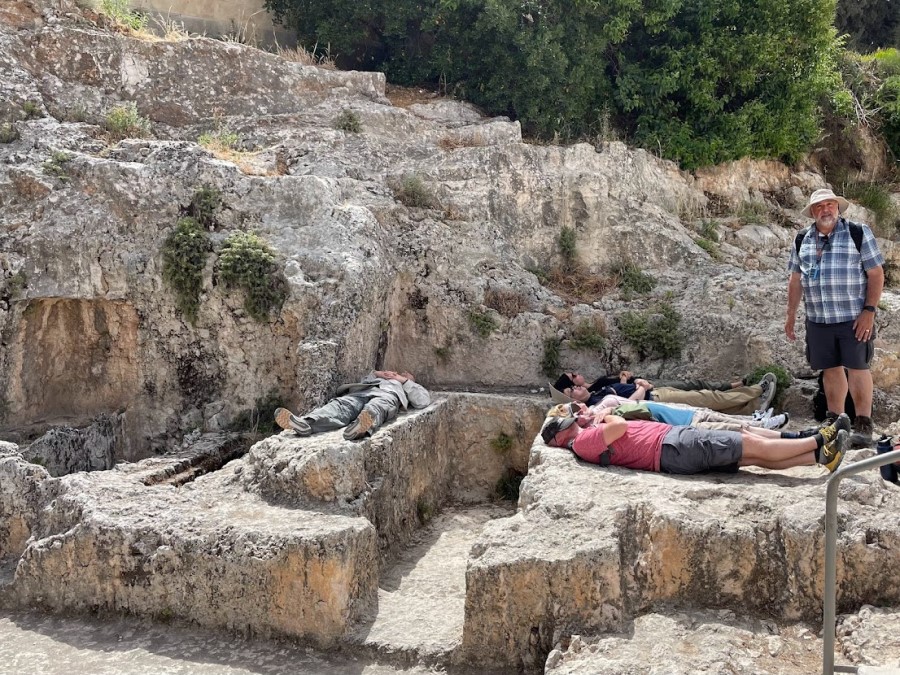Shalom!
While today was supposed to be focused on the Mount of Olives, an unexpected bike-marathon in the area meant we could not access the site. Therefore, instead, our trip leader took us to some other notable places south of Old Jerusalem. Here are a few highlights:
Herod the Great (72-4 BC), who ruled Judea during Jesus’ birth (Mt 2:1), was a wicked man and a paranoid ruler. But he was a great builder. Herod built seven fortresses throughout Judea during his reign (including Masada), and he made one of those fortresses his burial place: Herodium. Herodium is about 7.5 miles southeast from Jerusalem on a hill within the arid West Bank. In Herod’s day, this fortress-palace featured all the amenities of an aspiring ruler in the Roman world: a swimming pool, theatre, art gallery, and even Roman-style baths. However, as Herod neared death, he ordered a mausoleum for himself to be constructed on the side of the hill. He also decreed that, after he died, the other amenities on site were to be demolished and buried so that all who looked toward Herodium would only see his mausoleum (which would have been visible even from the Mount of Olives). Herod’s wishes were carried out upon his death. However, Jewish Zealots then destroyed Herod’s mausoleum just a few years later.
The city of Boaz, Ruth, King David, and Jesus was just a small town in both the Old and New Testament eras and about 6 miles south of Jerusalem (within the West Bank today). Bethlehem was built on a limestone hill with thin topsoil, meaning that, agriculturally, the town could only support limited farming and shepherding activity. However, the hill of Bethlehem contained many natural caves, and residents of Bethlehem often built their homes near or right on top of these caves; after all, the caves served as excellent shelters for animals during part of the year. A Bethlehem cave, then, likely played a crucial role in Jesus’ birth. As Luke reports, there was no room in the “inn” or, more literally, the “guest room” of Joseph’s relatives in Bethlehem (probably because another visiting family already occupied the space). Therefore, the hosting family probably provided room for Joseph and Mary in a cave normally used for animals. Thus, Jesus was born in a manger (Luke 2:7). A church was later built over the reported spot of Jesus’ birth in the fourth century AD, and, though that church went through several reconstructions over the centuries, it still stands today as the Church of the Nativity in modern Bethlehem. Inside the church is a space with a small glass portal over what could be the original rock floor of Jesus’ birth cave.
The Hinnom Valley formed the border of western and southern Jerusalem in biblical times. Though the valley is infamous in its own way (see Jer 7:31-32 and the NT Greek term “gehenna”), the southwest ketef or “shoulder of” Hinnom became the source of a notable Bible discovery in modern times. It turns out that the slope of the southwest hill opposite Jerusalem was used in the OT era for tombs, and one of these tombs remained unspoiled until discovered by archaeologists in 1979. Among the unearthed artifacts in this tomb was a pair of tiny silver scrolls dated to the 600s BC; each scroll was wrapped up with a hole in the middle. Researchers took three years to develop a technique to unwrap the scrolls without destroying them, but, when the researchers had their technique, they finally were able to read the scrolls’ paleo-Hebrew inscription. The inscription was the same on both scrolls: the words of the famous priestly blessing recorded in Numbers 6:24-26; the tiny scrolls were likely worn as part of necklaces. The Ketef Hinnom scrolls are a doubly remarkable discovery: they are the oldest portion of Scripture ever recovered (even predating the Qumran scrolls), and they are affirmatory evidence that at least some words of the OT were known and valued by the people of Judah during the seventh century BC.




